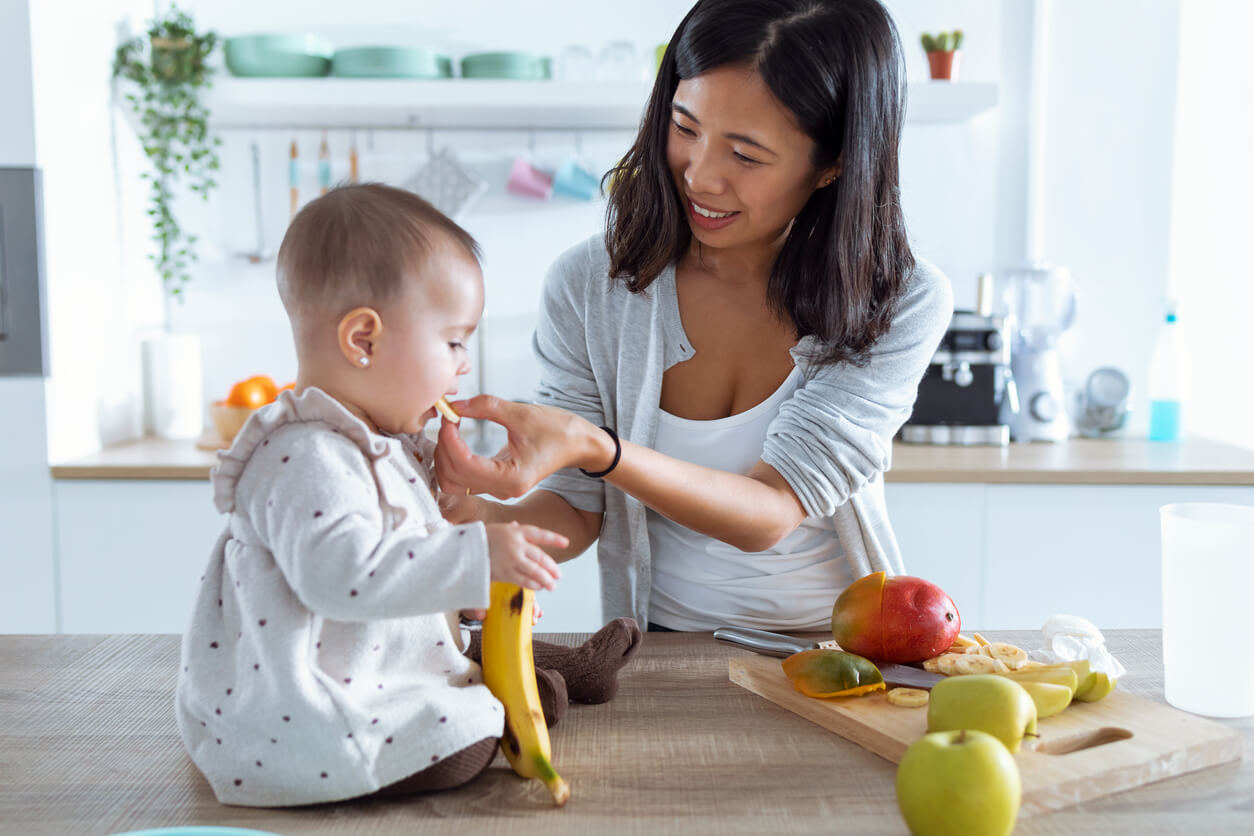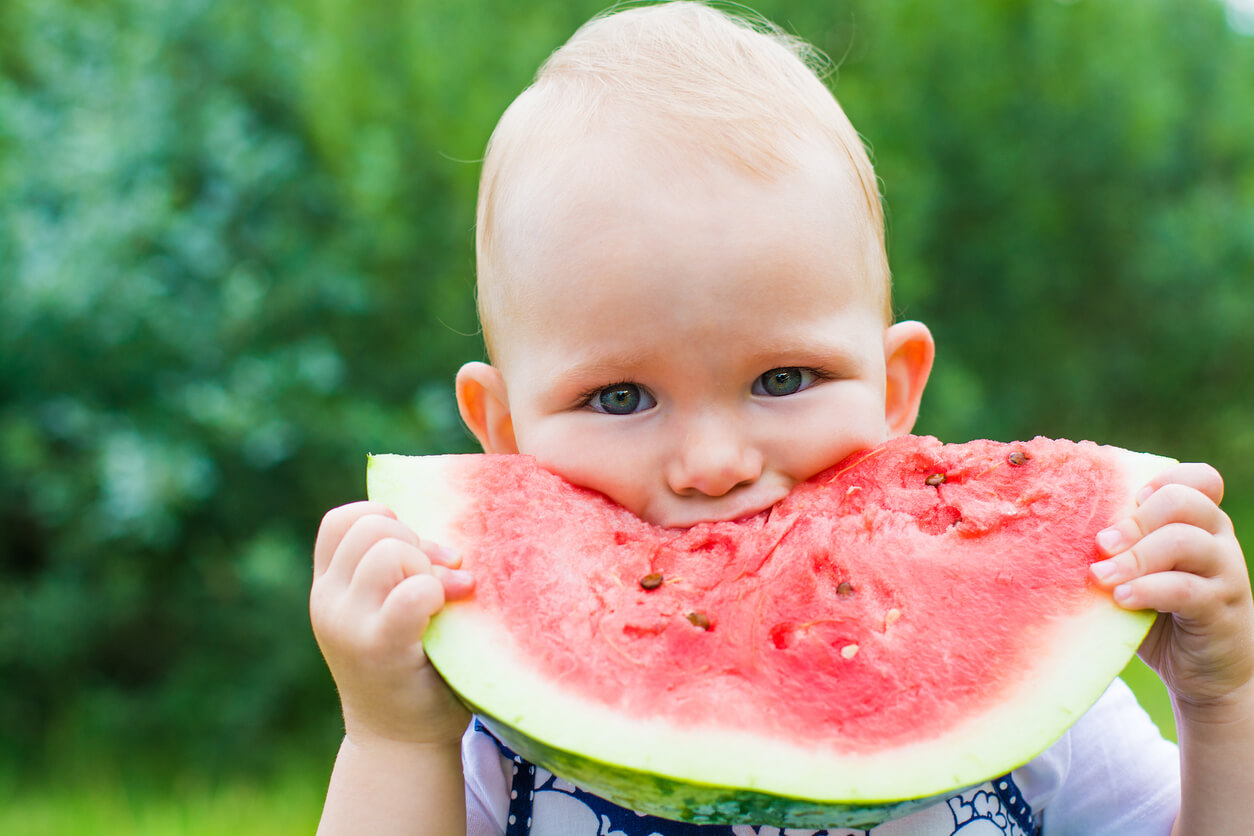Fruits for 6-Month-Old-Babies
The inclusion of fruits in the baby's diet is crucial. Keep reading the following article to discover the best fruits for 6-month-old babies.

When a baby reaches the age of 6 months, complementary feeding can be started. In this way, the increased nutritional requirements are covered and the body becomes accustomed to a more varied diet. However, not all foods can be introduced right away. Therefore, we’re going to tell you about the best fruits for 6-month-old babies.
First of all, it’s important to emphasize that the inclusion of fruits and vegetables in the infant diet is crucial. Not only because of their nutrient content but also because during the first stages of life, future eating habits are established. The inclusion of fruits and vegetables at this stage will increase the preference for them at later stages.
Fruits for 6-month-old babies: What fruits can they eat?
Below, we’re going to tell you which fruits a 6-month-old baby can eat without posing a health risk.
Banana
This fruit is one of the best sources of potassium. Also, it has low glycemic index carbohydrates, so it provides quality energy. In addition, it has organoleptic characteristics that allow good acceptance by children. It can be offered mashed or whole so that your baby can experiment with it.

Pear
Pears are noted for their vitamin C content. This nutrient has been shown to be essential for good immune function. If optimal levels aren’t reached in the body, little ones are more likely to experience infections, especially lung infections. In addition, this vitamin also acts as a powerful antioxidant.
Apple
Thanks to apples, correct fiber intake is guaranteed. This fruit contains a substance known as pectin, and this element is capable of improving digestive health through a positive effect on the microbiota. This is evidenced by research published in the journal Experimental & Molecular Medicine.
Offering it to your baby is very simple. One option is to prepare compote or apple sauce, although you can also give your baby medium-sized pieces that have been washed so that they can experiment with them. There are different varieties, each with a different level of sweetness. It’s best to try until you find the one they like the most.
Oranges
Oranges and tangerines are well-known for their vitamin C concentration. It’s common to use their juice, although it’s much better to consume them whole. This way, fiber isn’t discarded, which is an essential element to prevent fructose from having a significant impact on blood glucose levels.
Kiwi
Another of the best fruits to offer to a 6-month-old baby is kiwi. It also has a high amount of vitamin C. In addition, it has antioxidants that are necessary in order to prevent the formation of free radicals and their subsequent accumulation in the body’s tissues. In this way, many complex diseases are prevented in the medium term.

Melon
Fruits with a high liquid content are essential to ensure a good state of hydration. In addition, honeydew melons, cantaloupes, and watermelons are all very tasty, so babies will accept them perfectly. It’s best to cut small triangles and offer them to babies so they can experiment with them. However, it’s important to avoid seeds inside.
Peach
Peaches are known for their high concentration of vitamins and antioxidants. However, they’re more likely to cause allergies than any of the other fruits mentioned above. For years, parents were told to wait until after the first year to add them to the diet, but nowadays, experts recommend including them early on. In this way, autoimmune reactions can be prevented.
Include these fruits for 6-month-old babies
As you’ve seen, there are many different fruits that can be included in the diet of babies. These foods are considered beneficial for overall health. In addition, the fiber they contain will help to improve the functioning of the digestive system through a positive influence on the microbiota.
There are different ways to introduce these products into the diet of the little ones, and it’s best to alternate them. For example, you can prepare purees, competes, and smoothies, but you should also offer raw pieces to allow their manipulation. In this way, the child will adapt to the texture of these products and their taste for these foods will increase.

